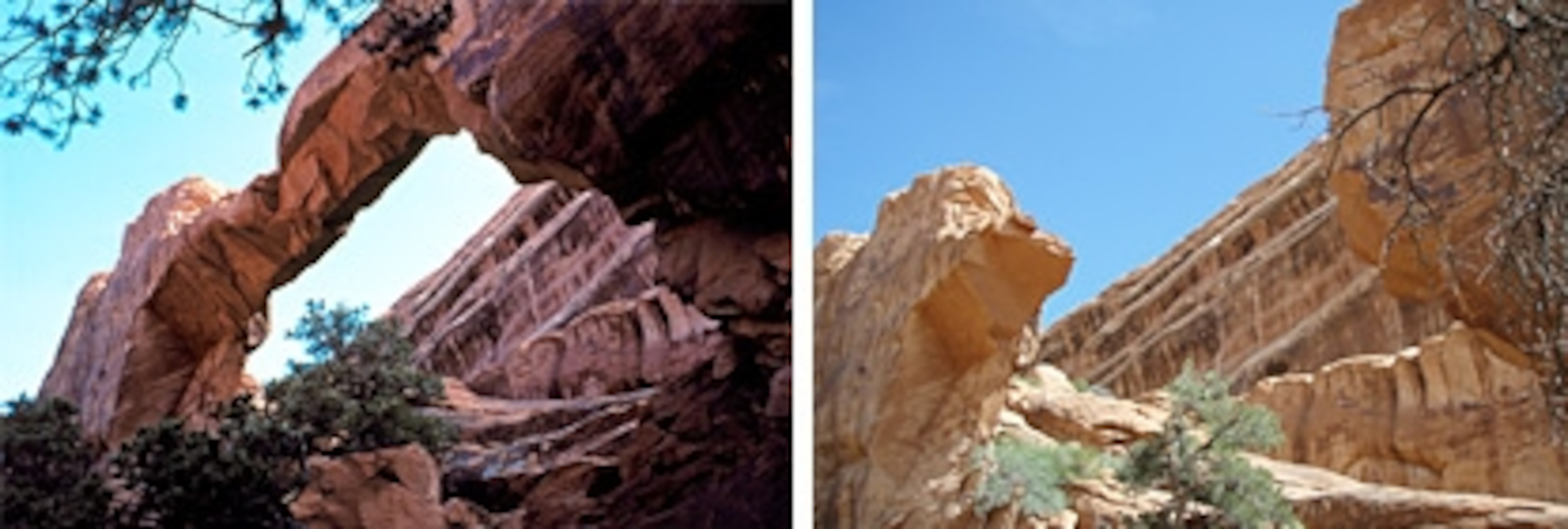
Wall Arch Collapses in Utah
The old saying, “from ashes to ashes and dust to dust,” seems all too appropriate given the recent news from Utah’s Arches National Park. Wall Arch (above), which was one of the park’s most-photographed natural arches, collapsed last week, leaving behind a mound of rocks and rubble. Though the arch was located along the popular Devils Garden Trail, no one reported seeing the collapse, which occurred on the night of August 4th.
According to park officials, the famed arch died of the same natural causes that created it in the first place (read: gravity and erosion). Portions of the Devils Garden Trail will be closed until the path is cleared and debris, which continues to fall, no longer poses a threat to visitors.
The free-standing arch was first reported and named by Lewis T. McKinney in 1948. The opening beneath the arch was 71 feet wide and 33.5 feet tall. It ranked 12th in size among the other arches in the park and was created by wind erosion
Though the arch will surely be missed, travelers shouldn’t be too disheartened by the news. There are, after all, more than 2,000 known arches in the park, which which has the highest density of natural arches in the world.
Photos courtesy of National Park Service
- National Geographic Expeditions
